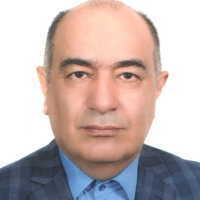Identifying and exploring the structure and approach in the indicators of science and technology evaluation in engineering in Iran and selected countries
The study aims to identify and explain the structure, approaches, and orientations of engineering science and technology (S&T) evaluation indicators in the USA as a developed country, Turkey as a developing and Muslim country, and South Korea as an Asian developed country to provide a framework for developing such indicators in Iran.
Printed and electronic documents and literature related to the field were studied using the library method and an attempt was made to identify and extract the basis for compiling these indicators in each of these countries. Then, the semi-structured interviews were conducted with 9 experts from the government-industry-academia sections who were selected using the purposive sampling to be obtained their views on the orientation of each of these indicators, and also its relevance to the needs of Iran. Then, the findings were analyzed with a thematic analysis approach.
After identifying and explaining the indicators related to each dimension and component and removing similar indicators, about 845 indicators were identified and information about each indicator, including the title, purpose, and source of index extraction was provided, and the experts’ views on the indicators orientation and the importance of them to evaluate engineering S&T in Iran were obtained. Finally, the main framework of the necessary orientations for the proposed indicators of evaluation of engineering S&T in Iran was presented.
Conclustion:
The results show each of the selected countries in addition to benefiting from the S&T evaluation common indicators, also has thematic orientations that can more effectively reflect the activities of S&T in fields such as engineering. The most important of these indicators are "patents", "research and development expenditures", "technology industry", "international trade in high-level technology" and "role-playing in the development of green growth technologies". Since evaluation indicators are always considered as the most important characteristic of the orientation of S&T policies of countries, using the group of indicators mentioned in the national reports of these countries can indicate that the scientific policies of these countries orientation to focus on specific areas of engineering development.
-
Informal Collaborations in Chemistry Research: A Scientometric Analysis of Acknowledgements and Their Correlation with Citation Rates
Mehdi Bahmani, Sepideh Fahimifar *,
Journal of Academic Librarianship and Information Research, -
Challenges of Research Performance Evaluation in Iran: A Qualitative Study
Nadia Saniee, Shahram Sedghi, , Salime Goharinezhad, Leila Nemati Anaraki *
International Journal of Information Science and Management, Winter 2025


